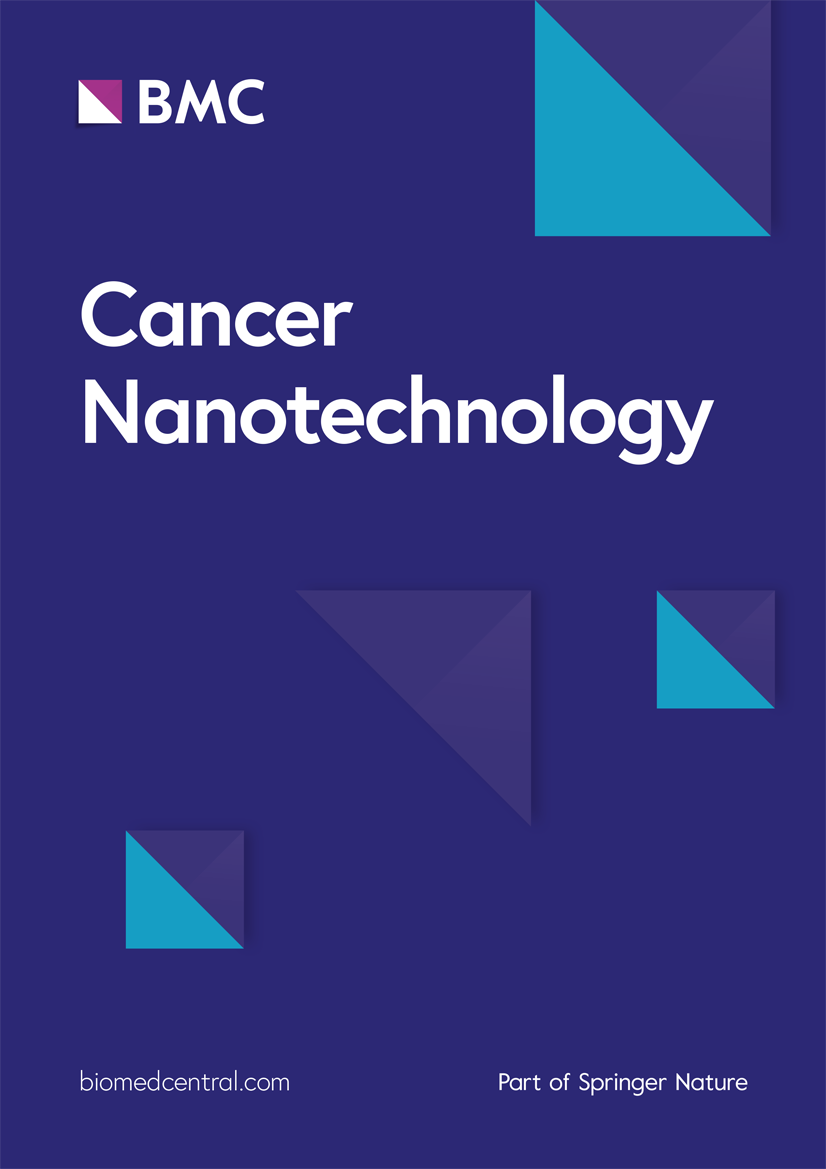Antitumor efficiency and photostability of newly green synthesized silver/graphene oxide nanocomposite on different cancer cell lines
IF 4.8
2区 工程技术
Q2 NANOSCIENCE & NANOTECHNOLOGY
引用次数: 0
Abstract
It is crucial to enhance new compounds for the treatment of most malignancies, and graphene oxide/silver nanocomposite (GO/Ag NC) has been paying attention to biomedical applications such as malignancies. In this work, green synthesized Ag@Cht NPs were successfully produced using chitosan for reduction and stabilization and added on GO sheet forming novel GO/Ag NC. Then, the produced anticancer nanomaterials GO, Ag@Cht NPs, and GO/Ag NC were assessed for their cytotoxicity against four distinct cancer cell lines: H460, HCT116, MDA-MB-468, and FaDu cells, at varying concentrations, using SRP assay after 48 h. The prepared nanomaterials were characterized by TEM, UV–Vis spectrophotometry, FTIRs, Raman spectroscopy and XRD. TEM images showed a regular spread of Ag@Cht NPs on the GO sheets with an average particle size of 15 nm. UV–Vis spectrophotometry shows two main characteristic peaks for GO/Ag NC, one close to 230 nm corresponds to GO, while the other peak at 425 nm due to Ag@Cht decorating the GO surface was blue shifted by few nanometers from 427 nm for Ag@Cht. Results of the laser irradiation by DPSS (diode-pumped solid state) confirm the photothermal stability of the prepared nanocomposite as there is no change in surface plasmon resonance (SPR) with varying exposure time. FTIRs measurements indicate that Ag ions interact with a hydroxyl group. This interaction shifts the O–H wavenumber and decreases the bond stretching intensity. In addition, Ag@Cht NPs and Ag/GO NC showed enhanced activity against cancerous cells. Results showed that GO, Ag@Cht NPs, and GO/Ag NC at (200, 400, and 600 µg/ml) had an impact on all evaluated cell lines. In MDA-MB-468, HCT116, H460, and FaDu cells, Ag@Cht NPs had the most effect across all employed cell lines, with IC50 values of 5.5, 9, 6, and 7.75 µg/ml, respectively. In conclusion, the produced novel nanocomposite may be an effective way to treat different cell lines, and future work is to use the prepared nanomaterials as anticancer drug delivery in photothermal chemotherapy combination treatment.新型绿色合成银/氧化石墨烯纳米复合材料对不同癌细胞株的抗肿瘤效率和光稳定性
增强治疗大多数恶性肿瘤的新化合物至关重要,而氧化石墨烯/银纳米复合材料(GO/Ag NC)在恶性肿瘤等生物医学领域的应用一直备受关注。本研究利用壳聚糖进行还原和稳定,成功制备出绿色合成的 Ag@Cht NPs,并将其添加到 GO 片材上形成新型 GO/Ag NC。然后,对所制备的抗癌纳米材料 GO、Ag@Cht NPs 和 GO/Ag NC 对四种不同癌细胞株的细胞毒性进行了评估:制备的纳米材料通过 TEM、紫外可见分光光度法、傅立叶变换红外光谱、拉曼光谱和 XRD 进行了表征。TEM 图像显示 Ag@Cht NPs 在 GO 片上呈规则分布,平均粒径为 15 nm。紫外可见分光光度法显示,GO/Ag NC 有两个主要特征峰,一个接近 230 纳米,对应于 GO,而另一个在 425 纳米处的峰是 Ag@Cht 在 GO 表面的装饰峰,与 Ag@Cht 的 427 纳米相比,蓝移了几个纳米。用 DPSS(二极管泵浦固态)激光照射的结果证实了所制备纳米复合材料的光热稳定性,因为表面等离子体共振(SPR)不会随着照射时间的变化而改变。傅立叶变换红外光谱测量表明,银离子与羟基相互作用。这种相互作用移动了 O-H 波长,降低了键伸展强度。此外,Ag@Cht NPs 和 Ag/GO NC 显示出更强的抗癌细胞活性。结果表明,浓度为 200、400 和 600 µg/ml 的 GO、Ag@Cht NPs 和 GO/Ag NC 对所有评估的细胞系都有影响。在 MDA-MB-468、HCT116、H460 和 FaDu 细胞中,Ag@Cht NPs 对所有采用的细胞系的影响最大,IC50 值分别为 5.5、9、6 和 7.75 µg/ml。总之,所制备的新型纳米复合材料可能是治疗不同细胞系的有效方法,未来的工作是将所制备的纳米材料用作光热化疗联合治疗中的抗癌药物递送。
本文章由计算机程序翻译,如有差异,请以英文原文为准。
求助全文
约1分钟内获得全文
求助全文
来源期刊

Cancer Nanotechnology
Pharmacology, Toxicology and Pharmaceutics-Pharmaceutical Science
CiteScore
5.20
自引率
1.80%
发文量
37
审稿时长
15 weeks
期刊介绍:
Aim:
Recognizing cancer as a group of diseases caused by nanostructural problems (i.e. with DNA) and also that there are unique benefits to approaches inherently involving nanoscale structures and processes to treat the disease, the journal Cancer Nanotechnology aims to disseminate cutting edge research; to promote emerging trends in the use of nanostructures and the induction of nanoscale processes for the prevention, diagnosis, treatment of cancer; and to cover related ancillary areas.
Scope:
Articles describing original research in the use of nanostructures and the induction of nanoscale processes for the prevention, diagnosis and treatment of cancer (open submission process). Review, editorial and tutorial articles picking up on subthemes of emerging importance where nanostructures and the induction of nanoscale processes are used for the prevention, diagnosis and treatment of cancer.
 求助内容:
求助内容: 应助结果提醒方式:
应助结果提醒方式:


